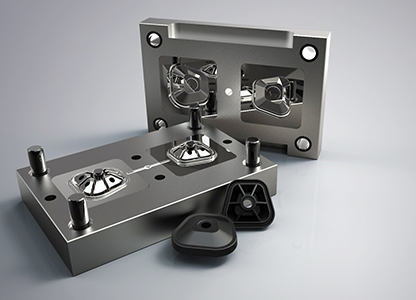Are AI and robotics redefining manufacturing

Automation in manufacturing: AI and robotics
In the field of manufacturing, automation is nothing new. With the advent of artificial intelligence (AI) and robotics, automation has however revolutionized the way products are made. It has increased efficiency, reduced human error, and reshaped the workforce and production landscapes. One remarkable example of the transformative power of automation is MX3D.
The role of AI and robotics in manufacturing
AI and robotics have played a pivotal role in transforming manufacturing processes. These technologies have enabled machines to perform complex tasks with precision and speed, leading to increased productivity and efficiency. Whether it's assembly line operations, quality control, or even advanced tasks like product design and optimization, AI and robotics make their introduction in manufacturing.
Increasing efficiency
Automation through AI and robotics has in some cases significantly increased the efficiency of manufacturing processes. Machines equipped with AI algorithms can analyze vast amounts of data and make real-time adjustments, ensuring optimal production. To my knowledge, most of these transformations are however deliberately designed around these processes. This minimizes downtime, reduces waste, and maximizes output. The ability to automate repetitive tasks allows human workers to focus on higher-value activities, driving overall productivity.
Reducing human error
One of the most significant advantages of automation in manufacturing is the reduction of human error. While human workers are susceptible to fatigue and distractions, machines programmed with AI algorithms can consistently perform tasks with precision and accuracy. This minimizes costly mistakes and ensures consistent quality throughout the production process. By eliminating human error, automation enhances product reliability and customer satisfaction. The challenge here, is to find the sweetspot between tasks that are repettive and where complexity is limited. A todler is still better in executing complex tasks than a top tier robot. Although progress is being made, especially in combination with computer vision, robots still seem to trip over seemingly easy routines.
Reshaping the workforce
Automation is rapidly reshaping the manufacturing workforce. While some may fear that automation will replace human jobs, the reality is more nuanced. Automation has created new job opportunities, particularly in the field of AI and robotics. The need to develop, maintain, and manage automated systems has led to increased demand for skilled workers in these areas. Additionally, automation has transformed traditional manufacturing roles, requiring workers to possess a different set of skills to collaborate effectively with machines.
The case of MX3D: unnovating additive manufacturing
An intriguing example of automation in manufacturing can be seen in the innovative work of MX3D. This Amsterdam-based company is at the forefront of using AI and robotics in metal fabrication, specifically additive manufacturing. MX3D has developed groundbreaking robotic arc welders that can construct complex metal structures, including bridges and buildings, using additive techniques.
By combining AI algorithms and robotics, MX3D's technology is capable of fabricating intricate designs with remarkable precision. The robots can work autonomously, adjusting their movements in real-time based on sensor feedback. This results in efficient construction processes, reduced material waste, and significant time savings.
The application of automation in MX3D's additive manufacturing not only increases efficiency but also opens up new possibilities in sustainable construction. By using the precise amount of materials required and minimizing waste, MX3D's robotic arms are contributing to a more sustainable and environmentally friendly approach to building.
The future of automation in manufacturing
The integration of AI and robotics in manufacturing is only the beginning. As technology continues to advance, the capabilities of automation will expand further. From machine learning algorithms that optimize production processes to collaborative robots working side by side with humans, the future of automation in manufacturing is full of possibilities.
While there are concerns about potential job displacement, it is crucial to recognize that automation can also create new opportunities and job roles. The manufacturing workforce of the future will be a blend of human and machine collaboration, where humans leverage the unique capabilities of AI and robotics to achieve greater productivity and innovation.
In conclusion, automation through AI and robotics has transformed manufacturing processes, increasing efficiency, reducing human error, and reshaping the workforce and production landscapes. The case of MX3D demonstrates the potential of automation in additive manufacturing and its contribution to sustainable construction. As technology continues to evolve, automation will revolutionize the manufacturing industry, unlocking new levels of productivity, creativity, and sustainability. Embracing this technological shift will be vital for companies seeking to thrive and succeed in the future of manufacturing.

Discover related Insights
Stay up to date with our latest articles.




